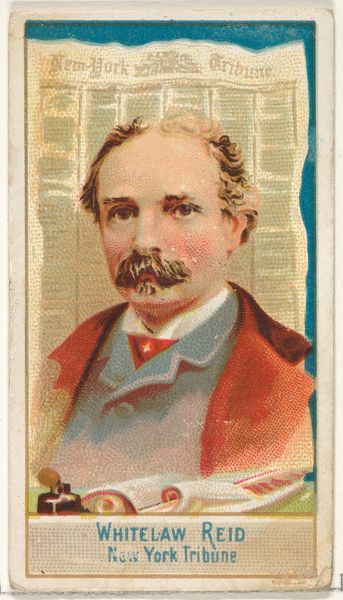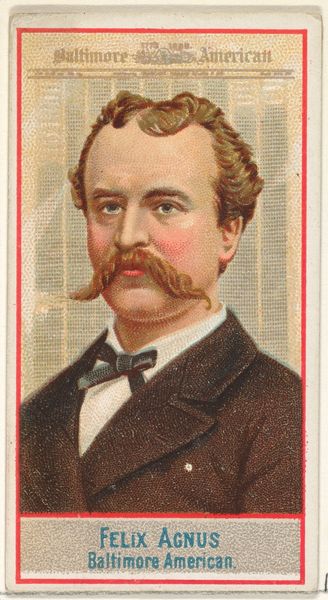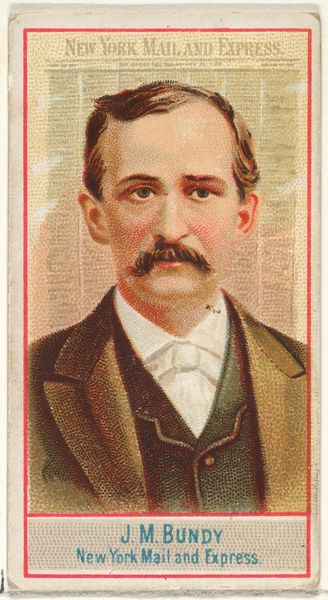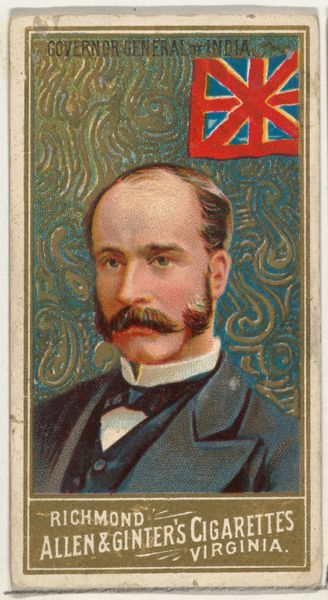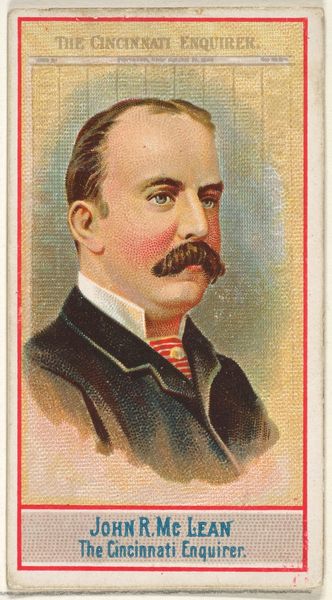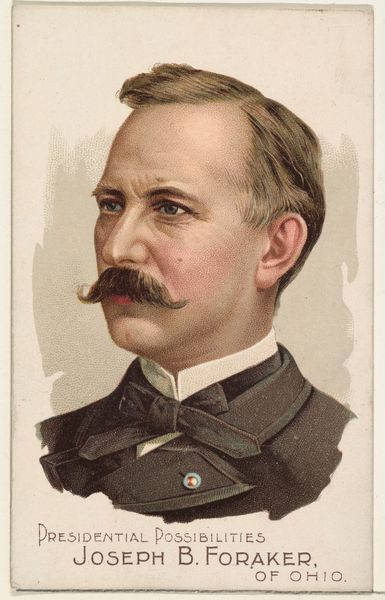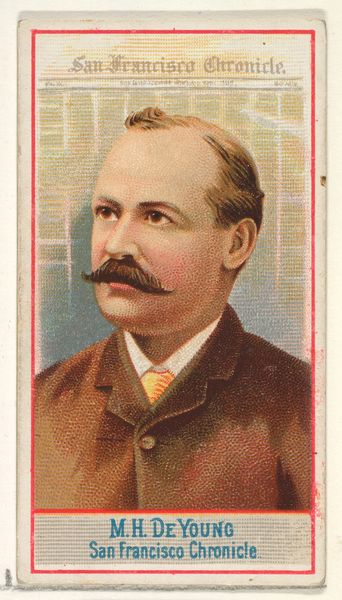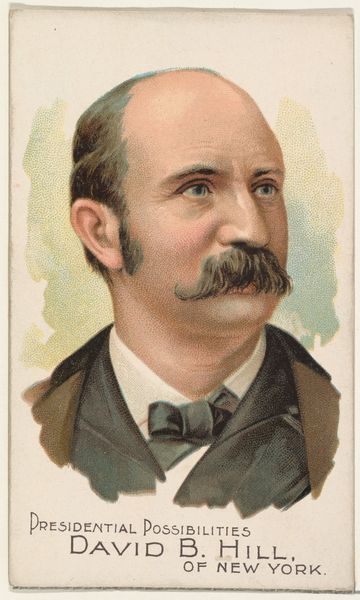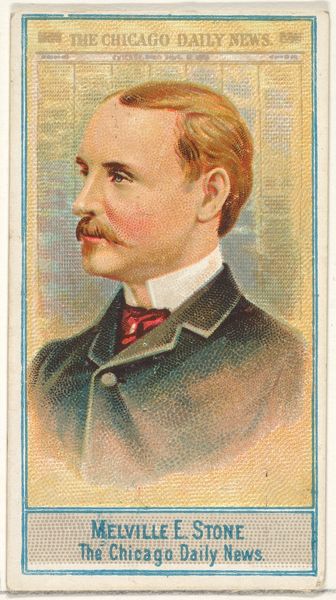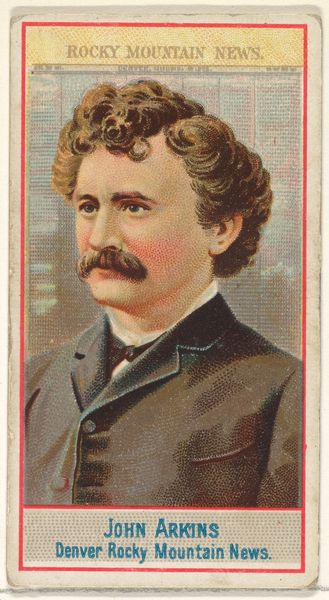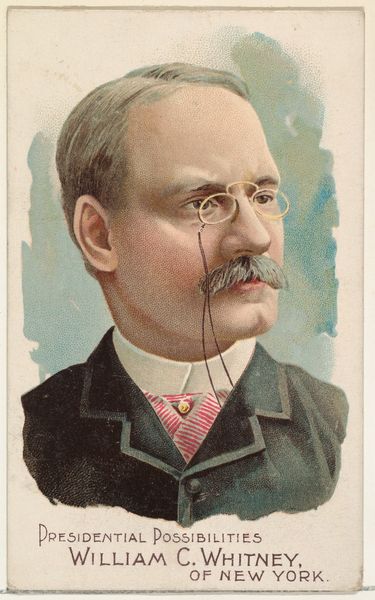
William M. Singerly, The Philadelphia Record, from the American Editors series (N1) for Allen & Ginter Cigarettes Brands 1887
0:00
0:00
drawing, graphic-art, print
#
portrait
#
drawing
#
graphic-art
#
art-nouveau
# print
#
impressionism
Dimensions: Sheet: 2 3/4 x 1 1/2 in. (7 x 3.8 cm)
Copyright: Public Domain
Curator: Here we have a chromolithograph trading card from 1887, part of Allen & Ginter’s "American Editors" series. This card depicts William M. Singerly, the man behind "The Philadelphia Record". Editor: There’s something undeniably dignified about this little card. It’s a portrait, yes, but also feels like an artifact embodying the powerful role of print media at the time. The man’s suit is detailed but the muted colours seem at odds with the red highlights. Curator: Indeed. These cards were inserted into cigarette packs, small objects intended for widespread consumption. They spoke to a growing culture of celebrity and ambition, each editor a symbol of influence, printed on the very products fueling American life. Consider how that positions them within the symbolic economy of the late 19th century. Editor: Exactly. Placing editors alongside baseball players and actors reveals the shift in cultural values. They are not merely journalists but emerging figures within the culture wars that were shaping the American conscience through access to print and increased literacy rates. The format shrinks this editor to the size of capital, reinforcing a problematic dynamic between individual clout and widespread ownership. Curator: What interests me are the design choices. The subtle newspaper print pattern behind Singerly’s head hints at the machinery of mass media—the intangible engine of communication itself. The bow-tie, which rests on a light white collared shirt gives him an appearance of formal respectability. These are coded visual indicators of a man of standing, power, and prestige. Editor: Right, but think about the subtext, the ways those symbols are curated to support certain narratives and exclude others. In a moment rife with challenges to journalism, like rising cases of yellow journalism, the need to sanitize editors was urgent, not harmless, given the stakes. Curator: These ephemeral objects held within them the capacity to both celebrate and subtly reinforce certain power dynamics in society. It’s all quite concentrated in such a little piece of print, wouldn’t you say? Editor: Absolutely. I think digging deeper into these seemingly insignificant historical moments allows us to better confront current battles over access and justice, even now.
Comments
No comments
Be the first to comment and join the conversation on the ultimate creative platform.
